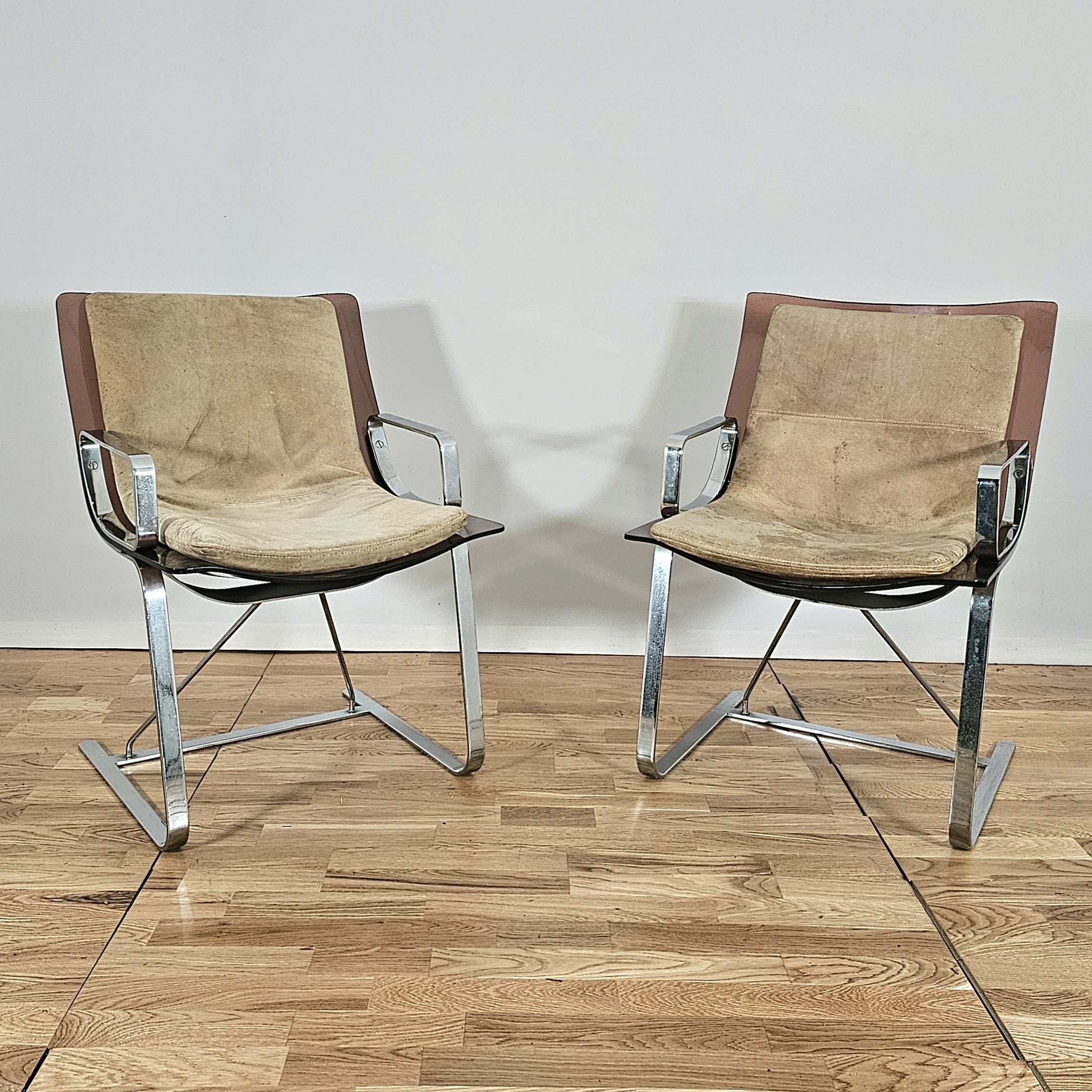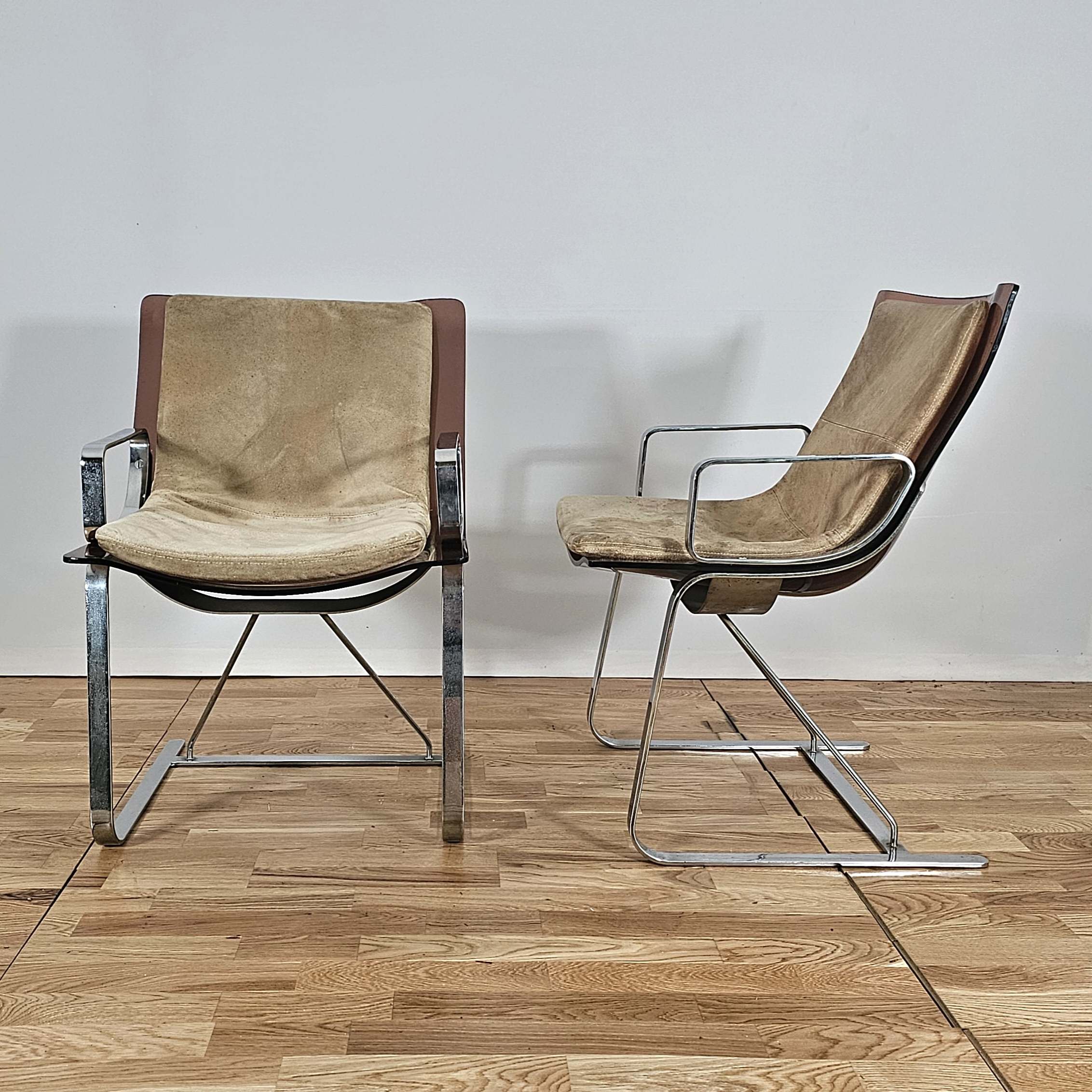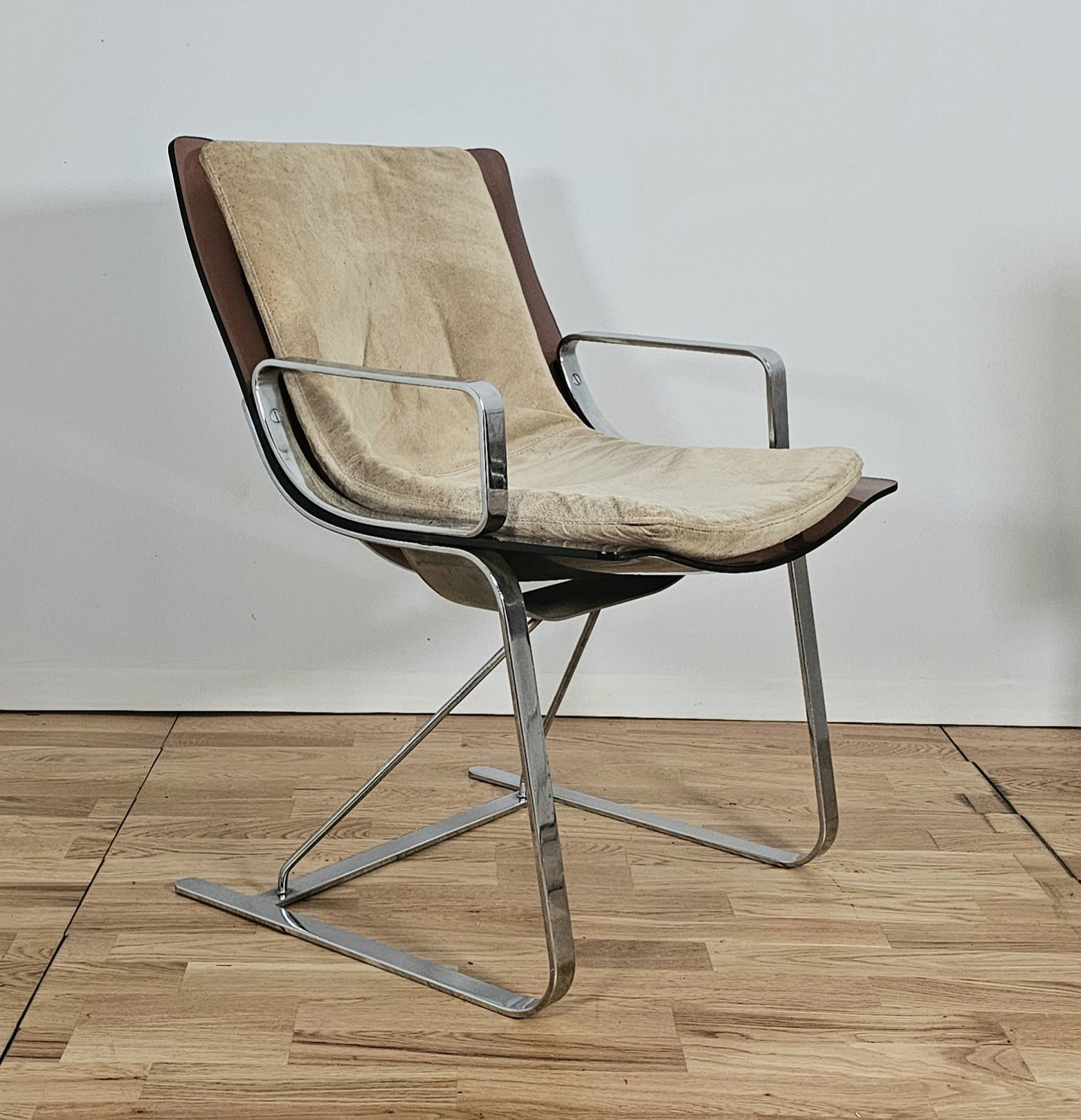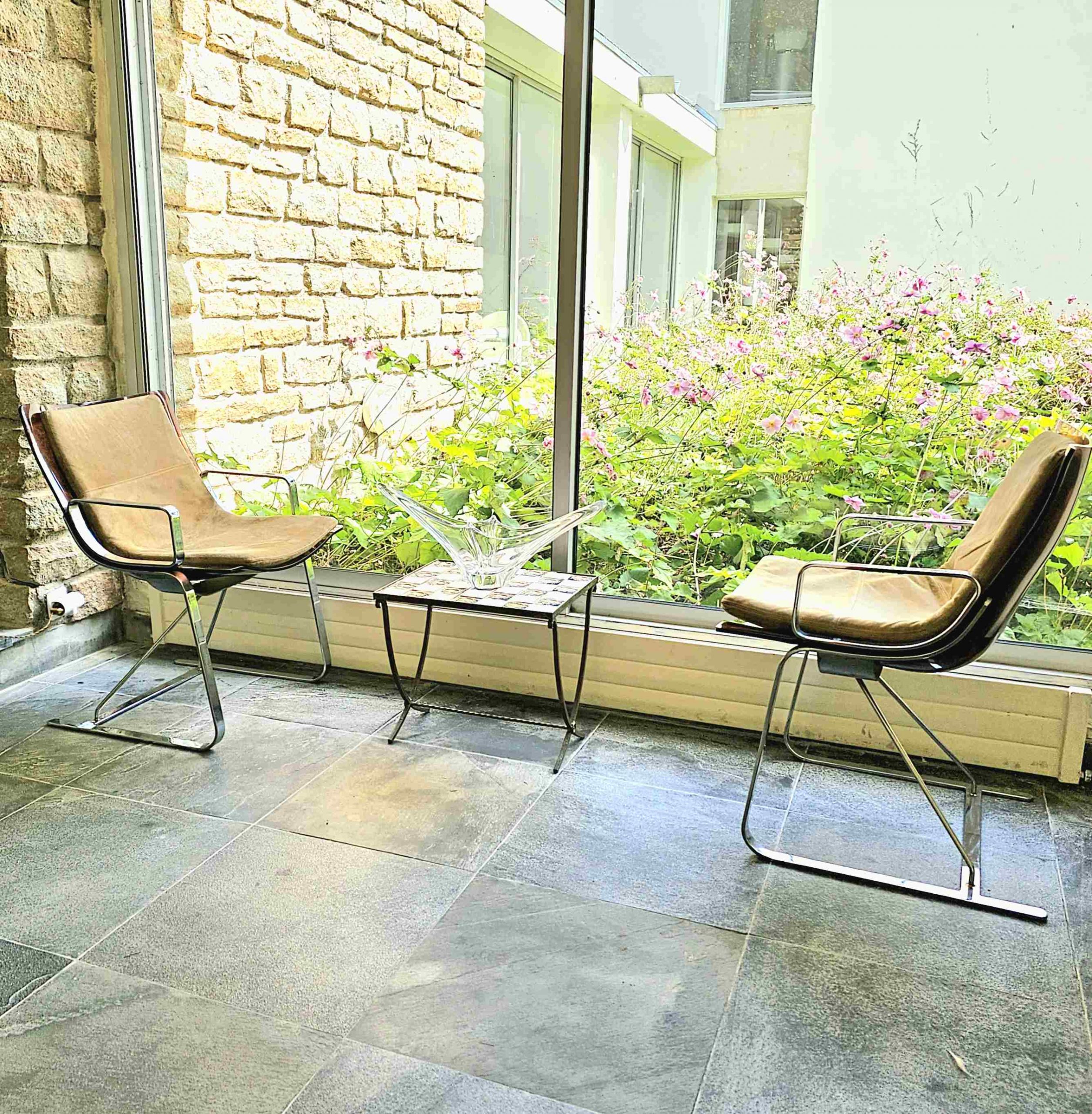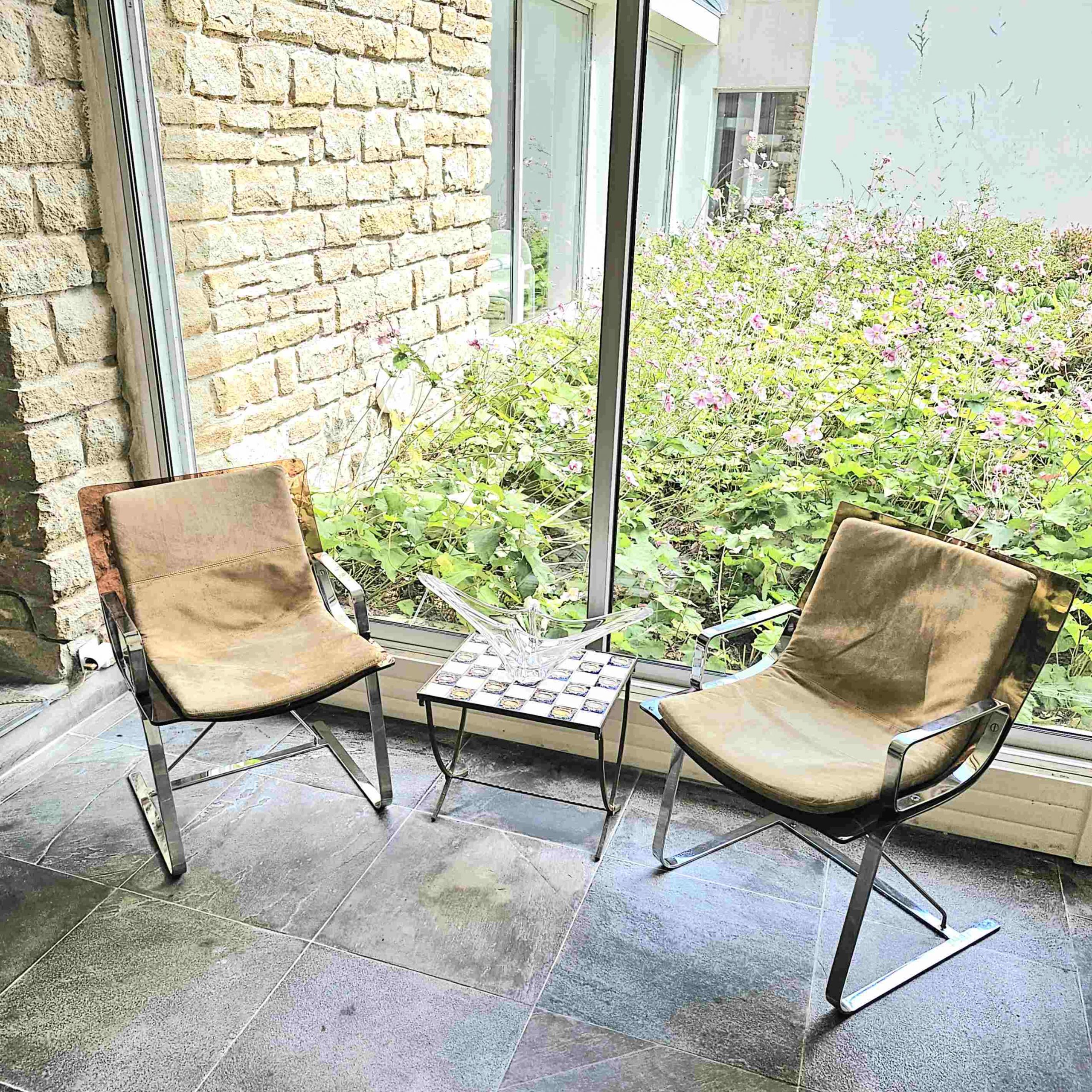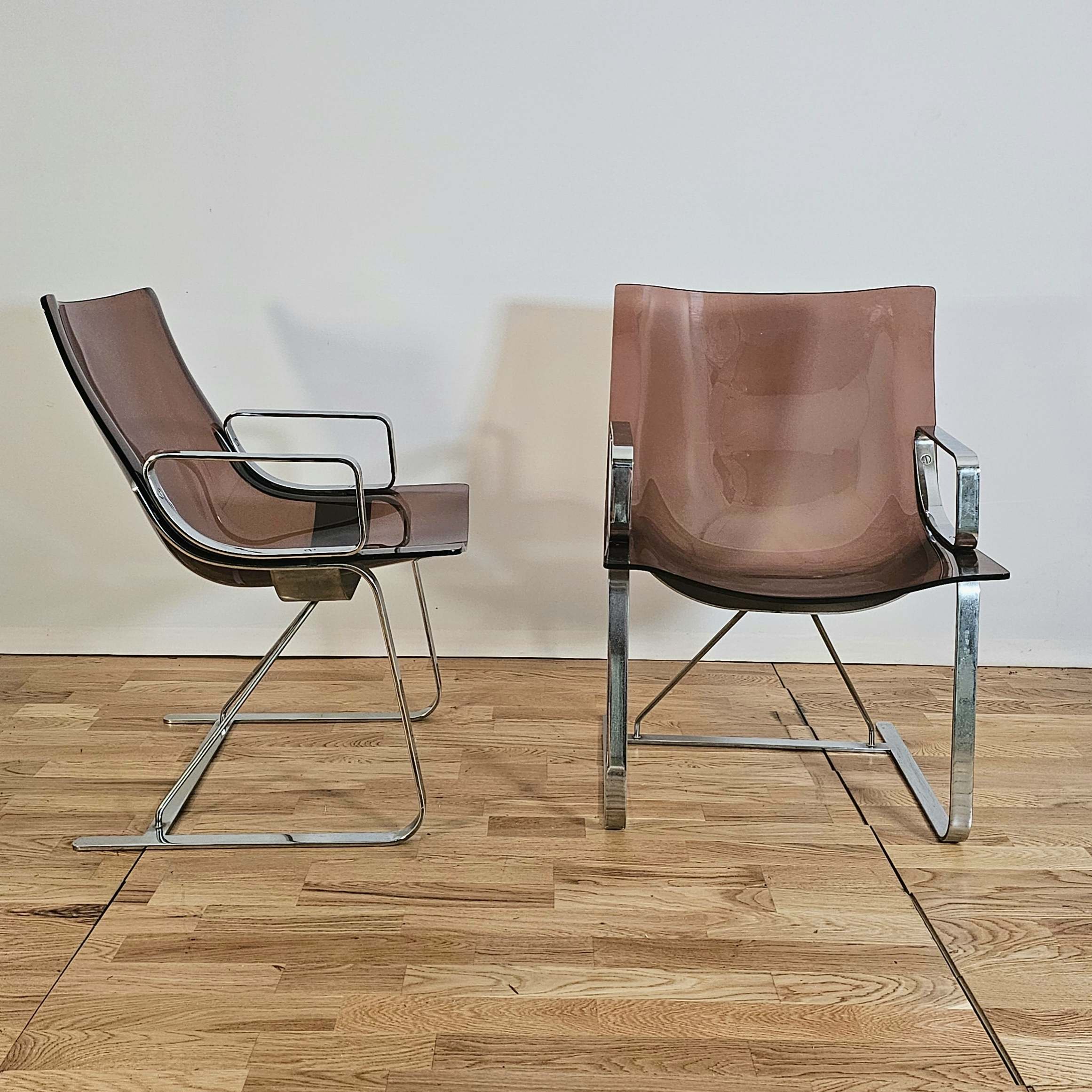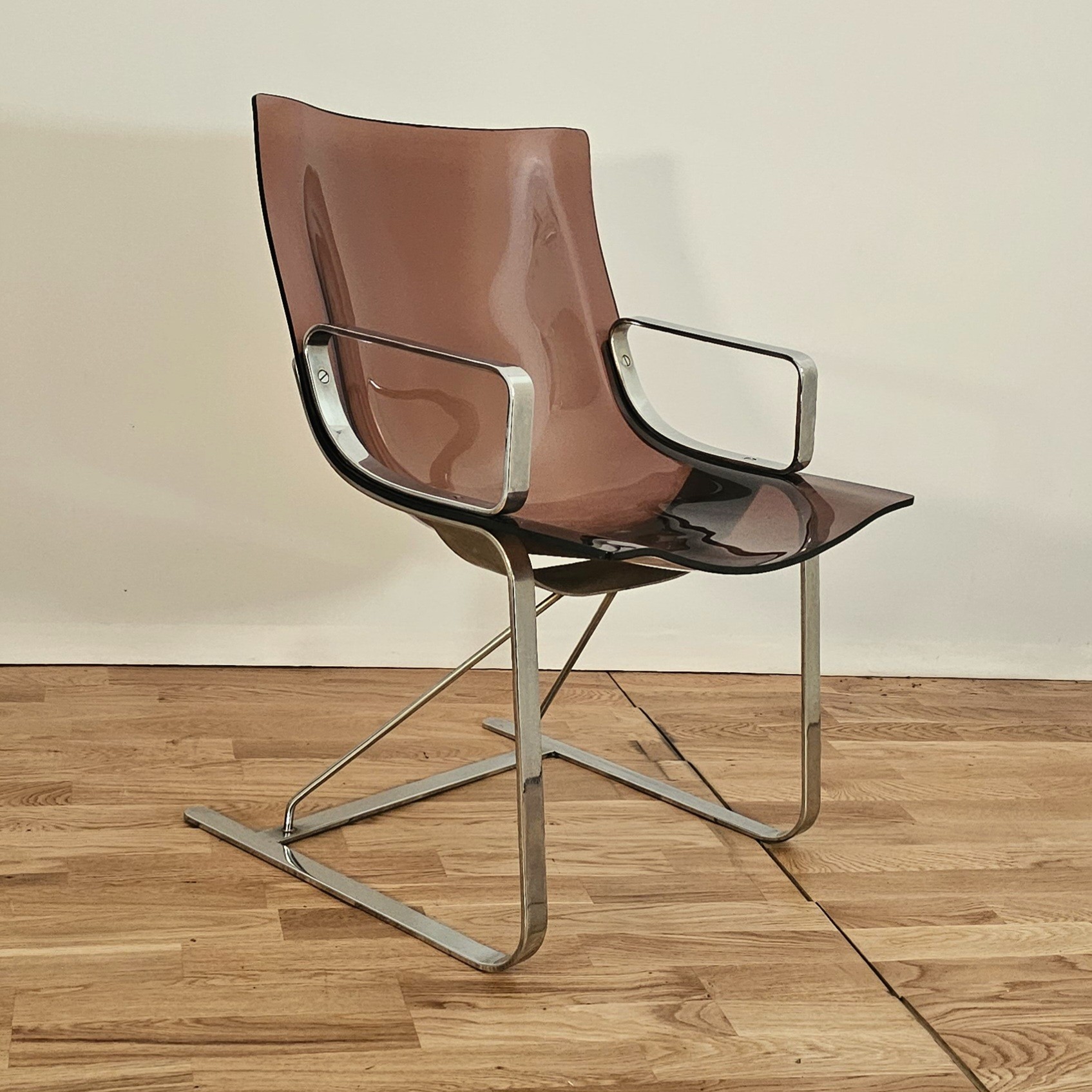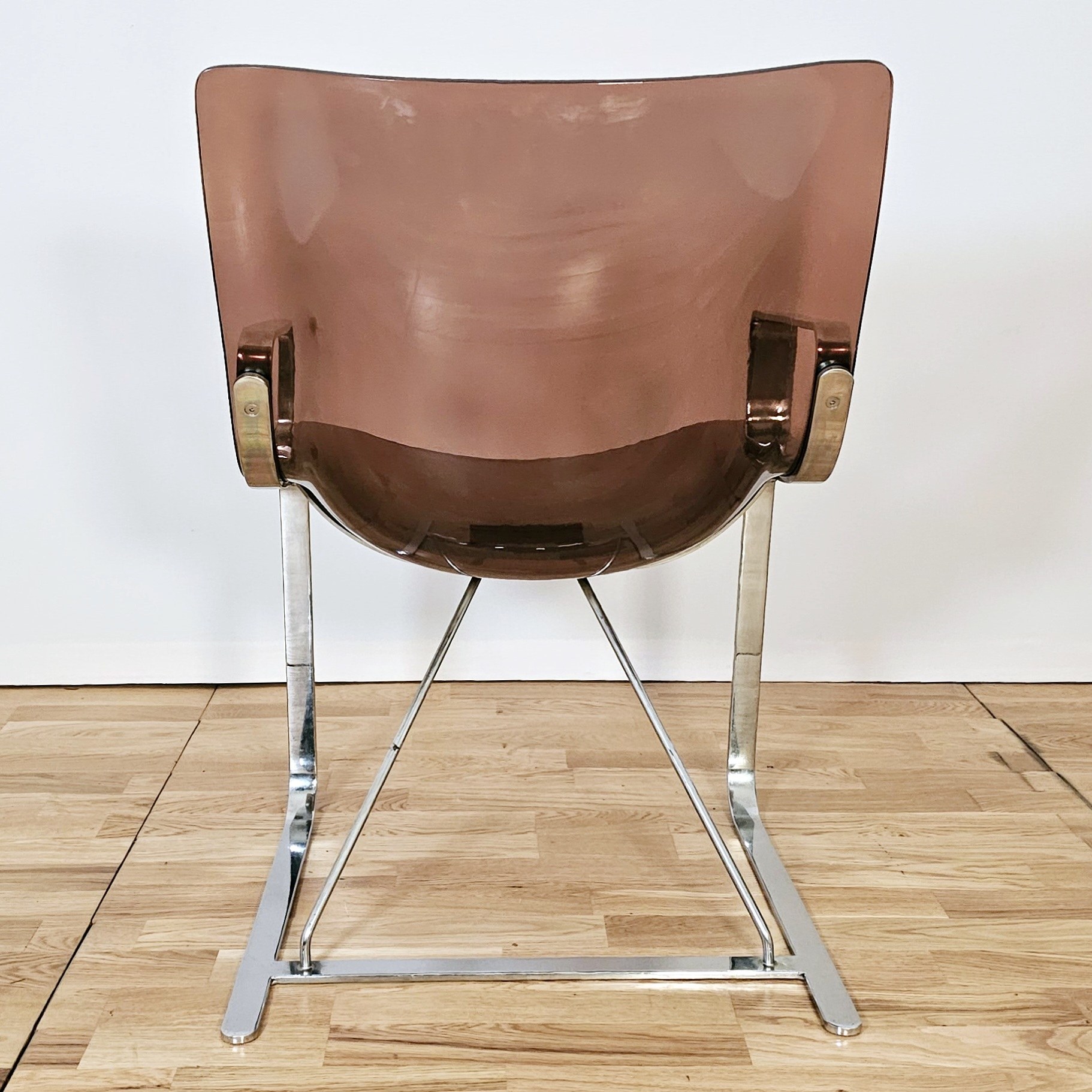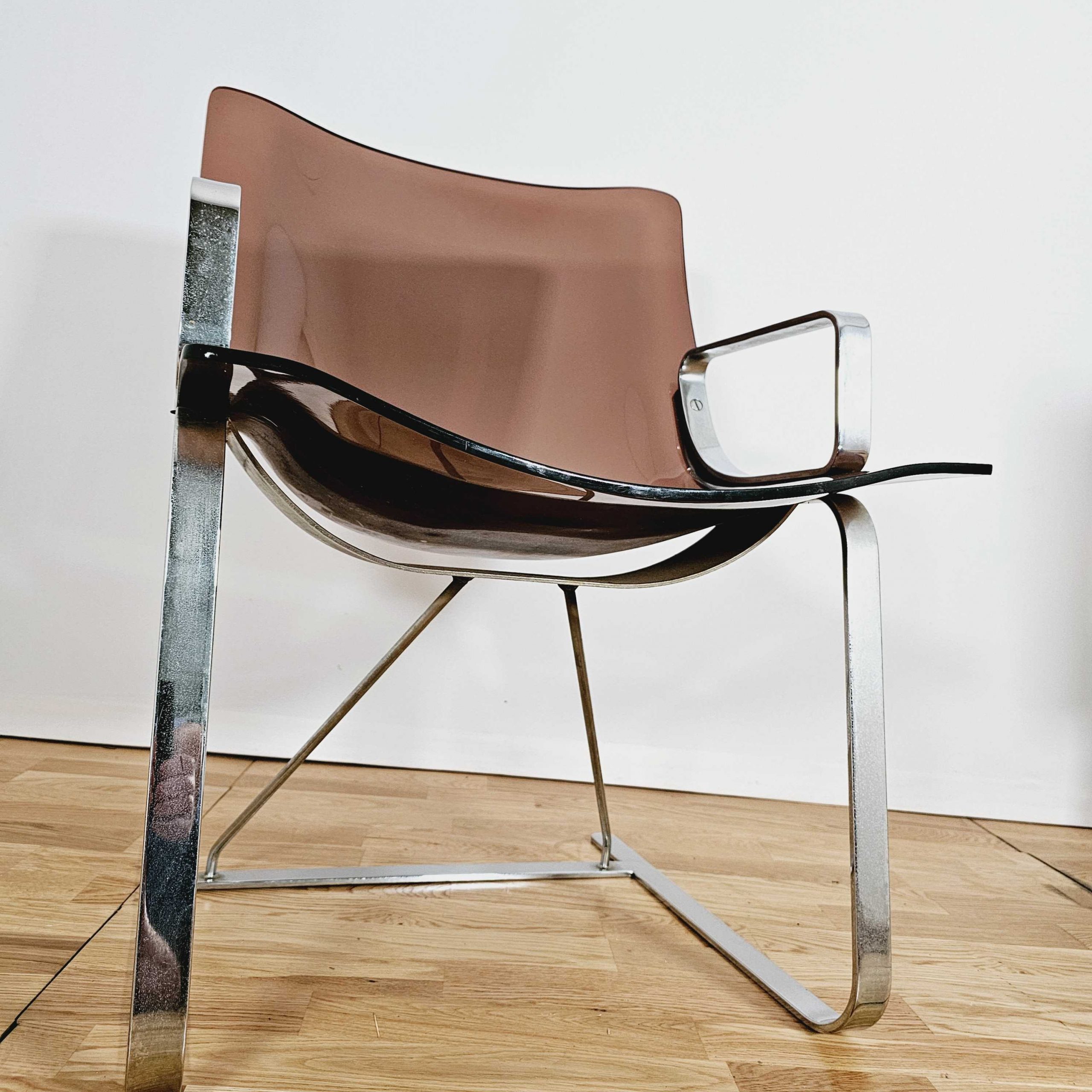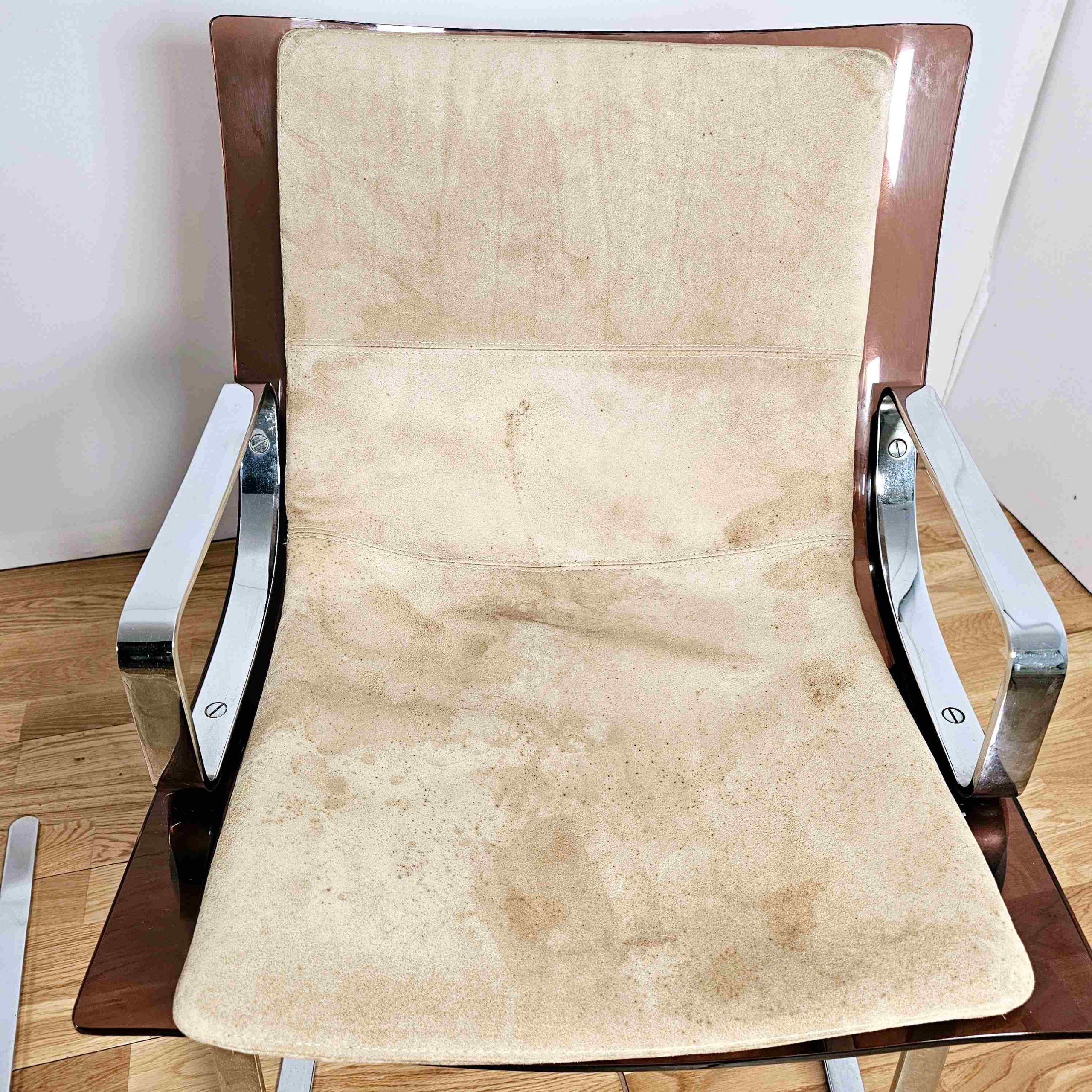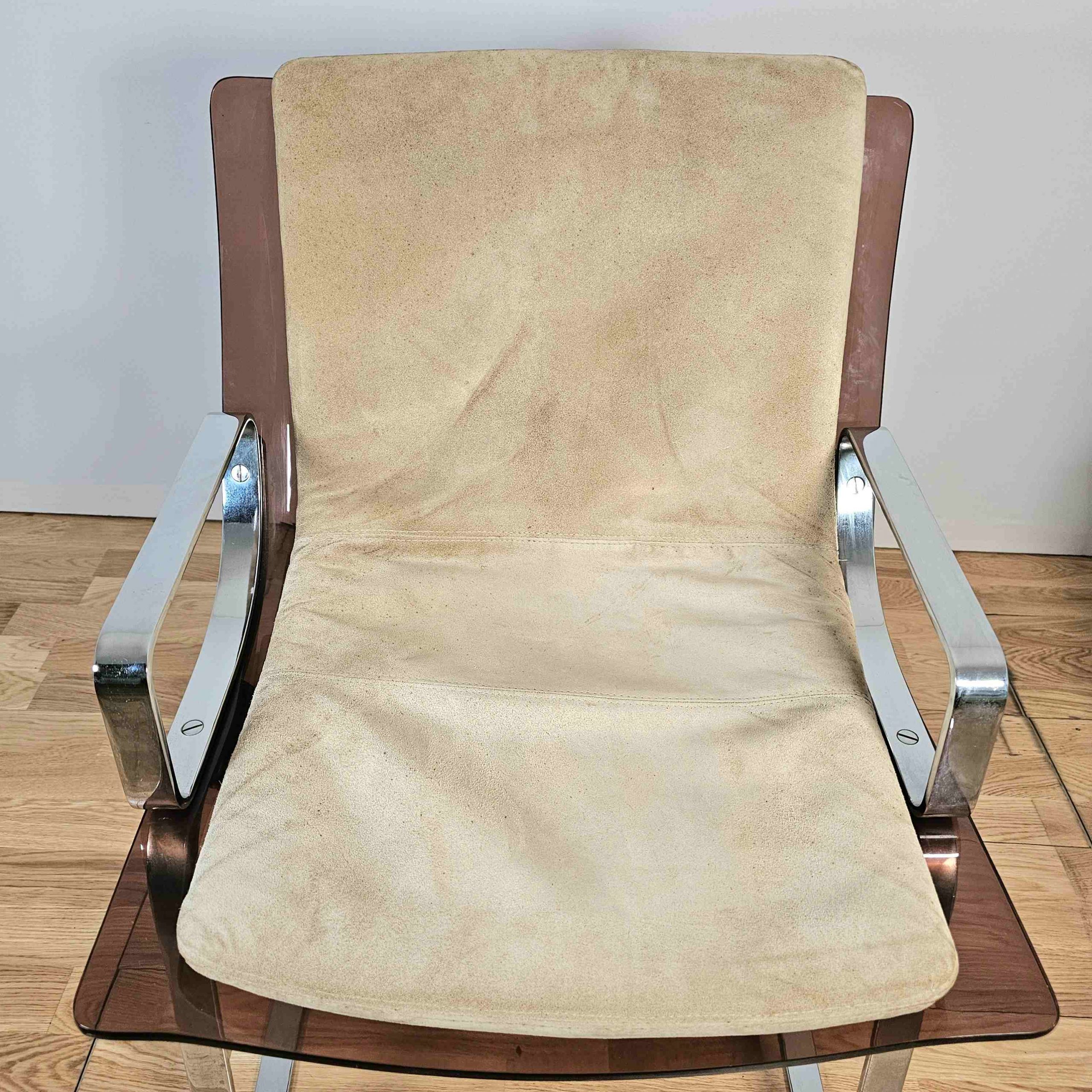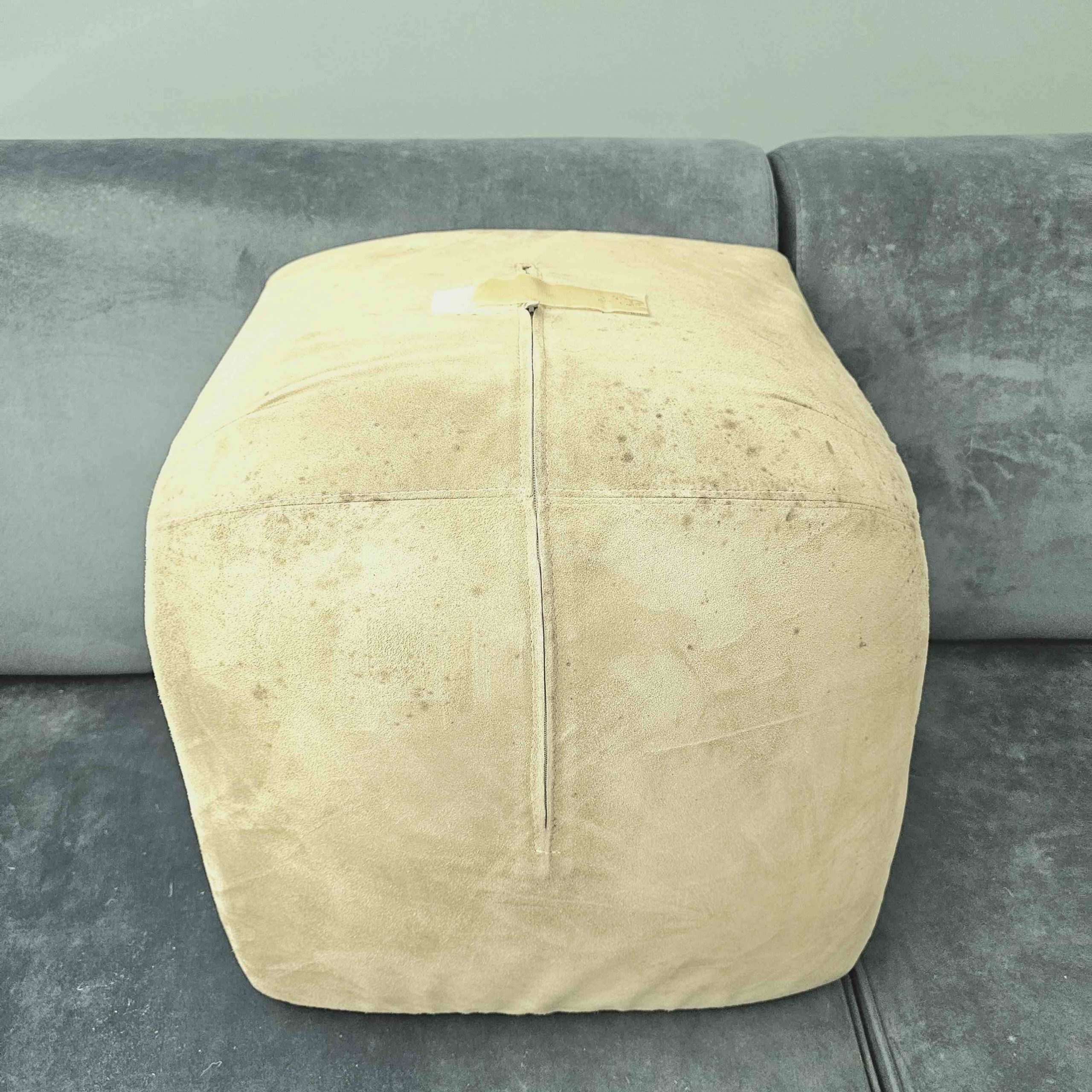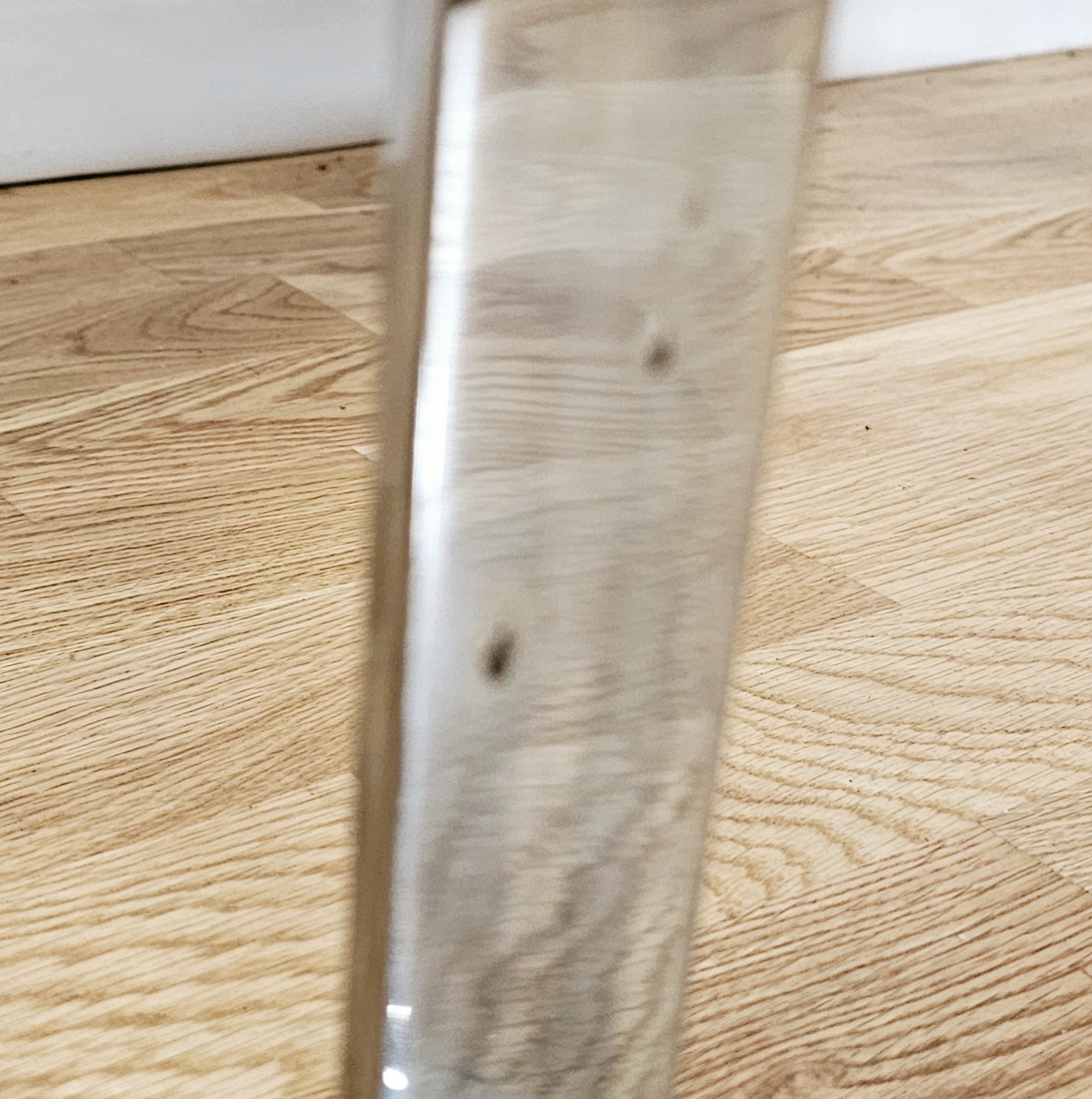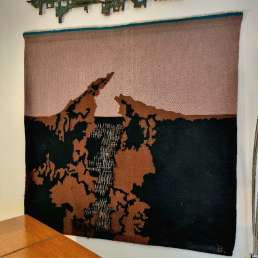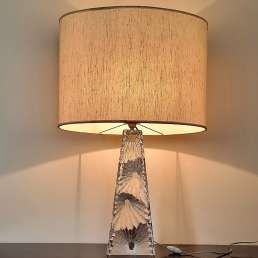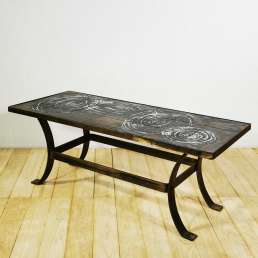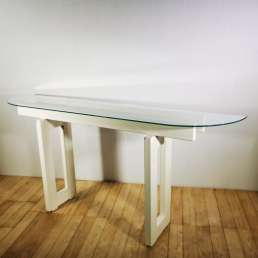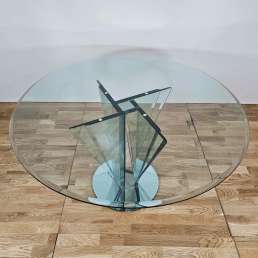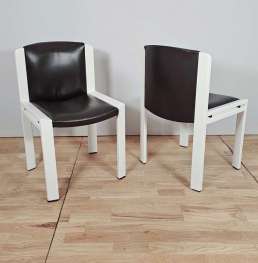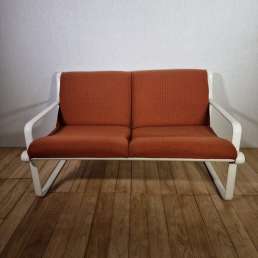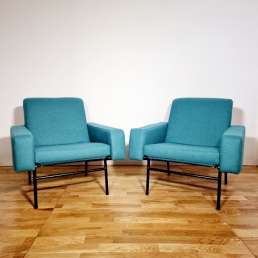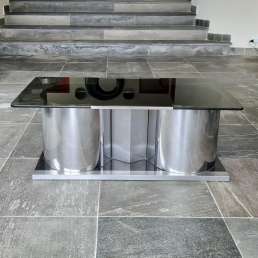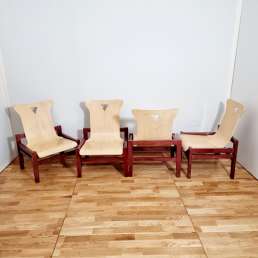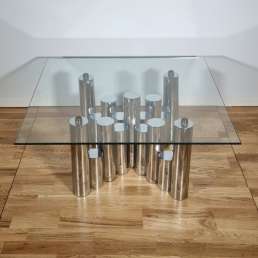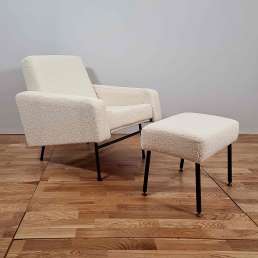Pair of smoked Plexiglas armchairs attributed to Raphaël for Apelbaum- Paris, circa 1960-1970
Description
What I like
I really like this pair of armchairs, firstly because of the novelty of the use of smoked Plexiglas, at the forefront of creation in the 1960s and 1970s. In the case of our armchairs, this new material is magnified by a beautiful thickness and a shape with curves for comfort. In addition, this quality requirement is found in that of chromed metal, thick and dense. This set makes chairs of 10 kilos each!
The sled shape of the base lightens the design of our seats and the plexiglass, a new material, is supported by a metal relief arch, allowing the shell to be refined.
All these elements lead us to believe that the designer of our seats is extremely talented.
Luckily, the presence of a label from the publisher Apelbaum on a similar armchair allows us to attribute our seats to Raphaël, who designed at least two other models for Apelbaum, using chromed metal and leather. On the other hand, Raphaël designed large corolla armchairs in smoked Plexiglas (also called lucite or perspex).
I therefore like to have seats from one of the great designers of the second half of the 20th century, combining classicism, taste for quality, sense of comfort and innovative use of materials.
Technical description
Pair of armchairs in smoked Plexiglas and chromed metal, attributed to Raphaël (1912-2000), edited by Apelbaum Esthétique du Siège-Paris
These armchairs are made of a thermoformed Plexiglas shell forming the seat and backrest, with a removable cushion in beige skin ribbed with 3 seams. Two metal blade armrests are screwed on either side of the seat. This shell is suspended on a base with two runners joined by a spacer at the back, itself connected to the metal arc under the seat by two chrome rods.
Around 1960-1970.
Wear, pitting and a tiny tear to the skin lining. Small rust spots under the discharge arch, not visible.
An armchair similar to ours, sold on June 23, 2021 at the Hôtel des Ventes de Chatou under number 471, had a label Apelbaum, Esthétique du Siege-Made in France-Paris under the seat.
Dimensions and weight
Height: 80 cm – Width: 53.5 cm – Depth: 56 cm
Seat height: 45 cm
Weight: 20 kg each
Mix & Match
I would love to surround our armchairs with the beautiful coffee table by Julien de Covemaeker with its splendid top with black and bronze abstract decoration, on which I will place the beautiful Cratère lamp from the house of Daum: spirit, beauty in use innovation of noble materials! Why not on this table the vase by Etienne Hajdu and the Manufacture Nationale de Sèvres from 1978, with a beautiful rotating hollow decoration, magnified by the splendid matte white enamel!
I would gladly mix these armchairs attributed to Raphaël with the G10 armchairs by Pierre Guariche, another great designer, either in the peacock blue version, or in the off-white terrycloth version: their elegant shape, with the very particular design of the armrest, will be highlighted by our armchairs, which are also pure.
On the walls, I would opt for the “Composition metallica” tapestry by Enrique Broglia, in the same brown tones as our armchairs and with the same metallic sparkles!
To give joy to the whole, I would hang the “Composition” by Edgard Pillet dating from 1950-1951 or the large tapestry by Daniel de Linière: “Rêve d’enfant”: in both cases, the flat areas of very bright colors will brighten up the more muted tones of our armchairs.
I would also like to place our armchairs in front of the monumental metal sculpture “Colonnes-1966” by Guillaume Leunens: our armchairs will pose their refined shape in front of these three columns with their discreet but refined decor.
In stock
Description
To know more
The designer
Raphaël Raffel, known as Raphaël (1912-2000), did his apprenticeship with Jansen between 1929 and 1934.
After studying at the Beaux-Arts, Raphaël – of whom Joséphine Baker would be one of his first clients – set up as a decorator in 1934; if he responds to private orders in the spirit of his time, he knows how to assert a new, completely individual touch. The post-war period will only confirm the lightness that emerges from his creations.
His style flourished after the war and evolved according to the new materials used such as lacquer or, from 1953, glass as a base following the Securit competition. It mixes materials whose luxury and very beautiful cabinetmaking execution are linked to usefulness, comfort and even ergonomics. Raphaël appealed to René Fumeron for the patterns of the fabrics and tapestries, for the ceramics to Georges Jouve, for the furnishing bronzes to Georges Levy-Mazaud and of course to Paul-Etienne Saïn and Henri Tambuté for their so-called Béka lacquer. in exclusive tones of almond green, dark red, with clouds, golden shades, patented in 1948. Raphaël participated in the Salon des Arts Ménagers from 1939 and the Salon des Artistes Décorateurs from 1955.
At the end of the 1950s, his agency experienced a considerable influx of public commissions: at a time when the State was concerned about the notion of brand image linked to that of service, these would be in turn decorations for post offices (rue d’Ulm, rue du Louvre), embassies, university residences (that of Antony in particular with Jean Prouvé and Serge Mouille), the National Assembly and finally the ground floor and the left wing of the Hôtel de Ville de Paris. The Brussels International Exhibition of 1958 invites him alongside Dumond, Arbus, Adnet, Sognot, Richard, Leleu, Motte, Old.
In the 1960s, Raphaël worked more for large administrations. His very personal style evolves slowly. The sconces are then in gilded bronze by Agostini or Durantet. The wood veneer disappears completely, giving way to glass almost systematically for the legs of the furniture, when he does not use metal or Béka lacquer.
Inimitable by his style, Raphael is considered today as one of the greatest French decorators of the 20th century.
The fact that Raphaël designed other series of seats for Apelbaum makes us think that our armchairs, designed by a great designer, may be a work of Raphaël. As well as the existence of corolla armchairs in smoked Plexiglas designed by Raphaël, for an unknown publisher.
The editor
Apelbaum Esthétique du Siege is a seat designer located in Paris. Among his creations, we note in particular armchairs in leather and chromed metal designed by Raphaël. The attribution to Apelbaum of our pair of seats is supported by the existence of an armchair similar to ours, sold on June 13, 2021 at the Hôtel des Ventes de Chatou under number 471, which bore the label of the editor under the seat.
A beautiful and authentic pair of armchairs at a fair price
Our pair of armchairs has been carefully selected for its aesthetic qualities, its originality and its fair price. Our choice favors above all the acuity of the design, of which the attribution to Raphaël and the edition by Apelbaum are guarantees, guarantee of a valorization of your new acquisition in your interior and of an ability to dialogue with your furniture, to match and mix to create a unique decoration.
Buying vintage furniture is surely a reasonable investment, so great is the appetite for the 1960s and 1970s.
Finally, buying vintage furniture preserves the resources of planet earth.


